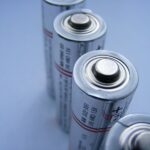Slurry piping systems are integral to various industries such as mining, wastewater treatment, food processing, and chemical manufacturing. These systems transport mixtures of solid particles suspended in a liquid (referred to as slurries), which often present challenges different from those encountered with pure liquids. Properly designing a slurry transport system requires an in-depth understanding of the unique characteristics of the slurry, the materials used in the piping system, and the need for flow control. This article discusses the essential considerations for designing an effective and efficient slurry piping system.
What is Slurry and Why is it Challenging to Transport?
A slurry consists of solid particles suspended in a liquid (usually water). The solid-to-liquid ratio can vary significantly depending on the process requirements, from low-concentration slurries to high-concentration mixtures. Slurry transport systems are used in industries such as mining (to transport ore), wastewater treatment (for sludge removal), and even in chemical processing (to convey products or by-products).
Unlike pure liquids, slurries exhibit behaviors that make them more challenging to handle in piping systems. The solid particles can cause issues such as blockages, erosion, sedimentation, and abrasion. This necessitates the need for careful system design, material selection, and operational management to ensure the slurry flows efficiently and without interruption.
1. Understanding Slurry Properties
The physical properties of the slurry are the primary factors that dictate how the system should be designed. These properties include particle size distribution, concentration, viscosity, and density, and they significantly impact both the choice of materials and the design of the piping system.
Particle Size and Distribution
The size and distribution of the solid particles in a slurry are critical to how the slurry flows and interacts with the pipe walls. Larger particles can lead to blockages, and they are also more likely to cause erosion of the pipe materials. Slurries with a higher concentration of solid particles may experience settling if the flow velocity is not carefully managed, which can result in clogs or uneven flow.
Concentration
The concentration of solids in a slurry directly impacts its viscosity. Higher concentrations increase viscosity, making the slurry thicker and harder to pump. This can also result in increased pressure losses within the system. A high solid content can lead to a higher risk of sedimentation during transport, requiring a careful design to prevent solids from settling and clogging the pipes.
Viscosity
Viscosity is the measure of a slurry’s resistance to flow. Slurries with higher viscosity require more energy to pump through pipes. The slurry’s viscosity is heavily influenced by the concentration of solids and the size of particles. Engineers must account for this factor to select the appropriate pump type and size, as well as pipe diameter, to maintain consistent flow.
Density
The density of the slurry is a combination of the liquid phase and the solid particles. Denser slurries exert more pressure on the piping system, which can lead to higher pressure drops across the system. The density must be accounted for in the design process to ensure the system’s pumps and pipes are appropriately sized to handle the increased pressure.
2. Material Selection for Piping
The materials used in the slurry piping system are one of the most important considerations. The right material must withstand the abrasive, erosive, and corrosive properties of the slurry to ensure system longevity and reduce maintenance costs.
Corrosion Resistance
Slurries can be highly corrosive, depending on the chemicals or compounds present in the solid phase. If the slurry contains corrosive substances, materials such as stainless steel, duplex alloys, or rubber-lined pipes are commonly used to prevent degradation and leaks. Corrosion-resistant materials ensure that the system lasts longer and minimizes the risk of failure due to chemical attack.
Abrasion Resistance
Abrasion is a significant concern in slurry transport, especially when handling coarse particles. Slurry particles can erode the inner surface of the pipes, leading to pipe wear and reduced flow efficiency. To address this, engineers may choose materials with higher abrasion resistance, such as ceramic-lined pipes or hard metal alloys. These materials are designed to withstand the mechanical forces caused by the constant friction of particles against the pipe walls.
Cost Considerations
While durability and performance are crucial, the cost of materials must also be considered. HDPE (High-Density Polyethylene) and carbon steel are commonly used for less abrasive slurries and can be a more cost-effective option. The choice of materials is always a balance between performance and cost-effectiveness, and engineers must select materials based on the specific requirements of the slurry and the operational budget.
3. Managing Slurry Flow and Velocity
Properly managing the flow of slurry through the piping system is essential to prevent sedimentation, blockages, and excessive wear on the pipes. This is where flow velocity and the type of flow regime come into play.
Critical Velocity
The velocity of the slurry flow must be above a certain threshold, known as the critical velocity, to ensure that the solid particles remain suspended in the liquid phase. If the flow velocity drops below this point, the solid particles will settle, leading to sedimentation, clogs, and blockages in the pipes. Maintaining a velocity above the critical threshold helps prevent these issues.
Flow Regimes
Slurry flow is typically considered a two-phase flow, meaning it involves both a liquid and a solid phase. The interaction between these two phases affects how the slurry flows and how much energy is required to pump it. Turbulent flow, where the liquid moves chaotically, is often preferred for slurry transport, as it helps keep the particles suspended and prevents sedimentation. Laminar flow, on the other hand, is slower and more orderly and could lead to the settling of particles in the slurry.
Optimizing Flow Velocity
To achieve an optimal slurry flow, the velocity should be maintained above the critical velocity while avoiding excessive speeds that could cause erosion or unnecessary energy consumption. Pipe diameter, flow rate, and pump power are all factors that must be adjusted to optimize the slurry flow within the system.
4. Pump Selection and Power Requirements
Pumps are a central component of slurry transport systems, and selecting the right pump type and size is crucial to ensuring efficient and continuous flow. The pump must be able to handle the increased viscosity and density of the slurry, which requires more power than pumping pure liquids.
Pump Types
Centrifugal pumps are commonly used for slurry transport because they offer high flow rates and are generally efficient for handling slurries with lower viscosities. However, for high-viscosity slurries or those containing large particles, positive displacement pumps (e.g., diaphragm or piston pumps) may be better suited as they provide more consistent flow regardless of pressure fluctuations.
Pump Power
Because slurries are denser and more viscous than liquids, pumping them requires more energy. Engineers must ensure that the pump is sized appropriately for the slurry’s properties. Under-sizing the pump can lead to insufficient flow and potential system failure, while over-sizing the pump can result in wasted energy and excessive wear.
Wear Resistance in Pumps
Slurries, particularly those with coarse or abrasive particles, can cause significant wear on pump parts, such as impellers, seals, and bearings. It is essential to select pumps with wear-resistant components or to use pumps that allow for easy replacement of worn parts. Regular maintenance and monitoring should be conducted to avoid premature pump failure.
5. Pressure Drop and Piping Layout
The pressure drop across a slurry pipeline is an important factor that needs to be accounted for during the design phase. This drop in pressure occurs as the slurry moves through the piping system and is influenced by factors such as pipe diameter, slurry velocity, and the frictional resistance within the pipes.
Pressure Loss Calculation
The more concentrated and viscous the slurry, the greater the pressure drop will be. Accurate calculations must be performed to determine the pressure requirements of the pump and ensure that it can handle the losses in pressure along the pipeline. Minimizing frictional losses by choosing appropriate pipe diameters and keeping the pipeline layout as straightforward as possible is crucial for efficiency.
Minimizing Friction
To reduce friction and pressure drop, the pipeline should be designed with as few bends, valves, and fittings as possible. These components can cause turbulence, which increases pressure losses. In addition, keeping the pipeline smooth and free from buildup can help reduce friction.
6. Maintenance and Monitoring
Slurry piping systems require regular maintenance due to the harsh conditions they operate under. Monitoring and maintaining the system helps ensure it operates efficiently and avoids unexpected failures.
Monitoring Systems
Flow meters, pressure gauges, and wear monitoring sensors are essential tools in slurry transport systems. These instruments allow operators to detect issues like pressure drops, blockages, and changes in flow velocity, enabling them to take corrective action before a problem becomes severe.
Routine Inspections
Slurry piping systems should undergo routine inspections to detect wear and tear, particularly in high-stress areas such as pumps and pipes. Scheduled cleaning of the system, such as using pigging systems, helps ensure that buildup does not lead to blockages or inefficient flow.
Conclusion
Designing a slurry piping system is a complex task that requires a thorough understanding of slurry properties, flow dynamics, material selection, and maintenance needs. Factors such as particle size, concentration, viscosity, and density all influence the design of the system. Additionally, selecting the right materials, pumps, and monitoring systems are essential to prevent issues like sedimentation, erosion, and wear. By accounting for these critical considerations, chemical engineers can design slurry transport systems that are efficient, reliable, and capable of operating in the demanding environments often encountered in slurry handling industries.















